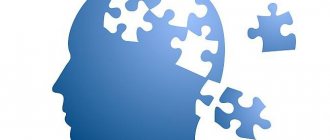What it is
It is believed that cognitive activity reaches its perfection only in humans. Thinking is the highest mental function in psychology. With its help, a person navigates space, accumulates experience, and forms ideas about the world.
In order to understand what thinking is, it is not necessary to understand the peculiarities of the central nervous system. It is enough to understand the details of the process.
Cognitive activity is the perception of the surrounding world. A generalized and mediated reflection of reality allows the individual to draw conclusions. For example, if he sees snow outside, he concludes that the temperature is low and warm clothes are needed.
The term is considered not only in psychology. It is also found in philosophy. Even ancient thinkers considered the process of cognition as a way to obtain truth and opinion. Later, Aristotle created the science of logic. It made it possible to identify new concepts: inference, judgment.
Descartes believed that the process of cognition is something incorporeal, the only attribute of the soul
In the 17th century, thinking began to be actively studied by psychologists, but at that time it was considered separately from the psyche. Only in the 20th century the situation changed, although each psychological school had its own ideas about thinking and the definition of the process:
- Phenomenology defined the process of cognition as a system of intellectual operations that has an innate nature.
- Gestalt psychology: thinking is the process of restructuring a problem with the help of insights (sudden insights).
- Psychoanalysis: Thinking is an unconscious process that depends on motives and needs.
- Behaviorism - in the process of cognition, connections are formed between stimuli and reactions.
In Soviet psychology, it was believed that thinking is formed only in the course of activity. The term was understood as the ability of an individual to solve problems and transform reality. It was believed that thinking is an innate skill.
Forms
Frustration - what is it?
A person can be surrounded by various objects and phenomena. The process of cognition has two features: mediocrity and generality. The first term means that the individual relies on sensations, perceptions and ideas. The second is the ability to combine features and determine which object they are characteristic of. Thinking processes are expressed in different forms.
Concept
When studying a new subject, a person forms ideas about it. This is expressed in verbal form. Concepts can be concrete (apartment, house, cow, etc.) or abstract: good, evil, conscience and others.
Important! The meaning of a concept is revealed through speech through reasoning.
With the help of this form of thinking, a person can divide objects according to characteristics.
Judgment
Thought processes are aimed at forming a positive or negative assessment of an object or phenomenon. A judgment can be general, particular or individual. The first group includes conclusions regarding a certain group, for example, “all birds fly.” For the second, only part of the group is assessed: birds of the Passerine family can fly. The third group explains the assessment of one object: the hummingbird flies the fastest.
Inference
Thinking in psychology is not presented as a permanent structure. It develops, and the higher its level, the easier it is for a person to reason. Inference is the ability to draw conclusions based on existing judgments.
A simple example is that dogs have guarding skills. The Central Asian Shepherd is a breed of dog. Based on these judgments, we can draw a conclusion: Central Asian Shepherds are excellent guards.
Not all conclusions can be correct, and a person’s reasoning is not always truthful
The process of such reasoning always looks like short chains. The higher a person’s level of thinking, the faster his cognitive processes occur.
Types of thinking
Psychologists also distinguish different types of thinking. Usually each type divides people into two categories
:
- Logical - ethical
. Representatives of the first type reason in terms of patterns, rules, and logical connections. People from the second type think based on feelings, experiences, and mood. For the former, communication is an exchange of information, and for the latter, it is an exchange of energy and emotions. - Sensory – intuitive
. The first type involves concrete and practical thinking, its representatives are good at noticing details; they reason from the point of view of current events, understand the current situation. The second type is global, philosophical thinking, while it is theoretical and divorced from the current situation. - Decisive - judicious
. People of the first type make decisions quickly and can act in a tense environment; They often make mistakes, but quickly correct the situation and learn from their mistakes. People of the second type take a long time to make decisions, they are used to acting in a calm and comfortable environment, and avoid unnecessary actions. - Schizothymic - cyclothymic
. Schizothymic people are characterized by subtlety of feelings, selfishness, power, and the desire to be better than others. In ordinary life they show some signs of schizophrenia. Cyclothymics are prone to manic-depressive syndrome; they are irresponsible, carefree, cheerful and sociable. - "Changer" - "runner"
. People of the first type are oriented towards various actions, each time they do something new. But “runners” prefer to do one thing until they complete the task; they are conservative in everyday life, carefully choosing friends, communication, hobbies, and purchases. Such people do not adapt well to sudden changes. - Introverts - extroverts
. This division is well known: the thoughts of the former are directed primarily at their inner world, and the thoughts of the latter are directed primarily at the external world. The former are sensitive, reserved and reasonable, while the latter are active, sociable and open. - Internals - externals
. People of the first type believe that everything that happens to them depends only on their personal qualities. They blame only themselves for all adversity, and rejoice in success as their achievements. People of the second type are sure that everything around them happens due to external circumstances: the actions of other people, chance, “fate,” etc. - Positivism - negativism
. People of the first type see in a situation primarily the qualities that it contains. They reason in affirmative constructions: “What is the weather now? “It’s good, it’s warm outside.” Negativists first notice in the same situations qualities that are absent in them, and reason with negative constructions: “What is the weather now? “Not bad, it’s not cold outside.”
In each of these types, mental activity has its own specifics. In particular, the ability to make true and false conclusions depends on this. However, overly pronounced representatives of either side tend to constantly make logical errors. These are, say, externals and internals. They often cannot objectively assess the situation and are guided by the simplest initial attitudes: “This happened because of me” or “This happened because of others,” when in fact the situation occurred due to a confluence of many circumstances. And it contains both part of the fault of the person himself and part of the fault of the environment.
Since we are talking about logical errors, it is worth considering a type of thinking that is initially erroneous. This is the so-called predicative thinking, which psychologists contrast with logical thinking. A predicate, or predicate, is what is said about an object, its quality or action that is relevant at the time of utterance. “Predicativism” is a type of reason when a person identifies dissimilar objects due to the same predicate.
Example: “Muslims do not eat pork. Vasya doesn't eat pork. Therefore, Vasya is a Muslim.” The error in reasoning is obvious. The correct reasoning in this case would be: “Muslims do not eat pork. Ahmet is a Muslim. Therefore, Akhmet does not eat pork.” The predicate is not an essential feature of the subject; it is relevant only at the time of utterance; therefore, the same predicative can be applied to many unrelated objects. Not only Muslims do not eat pork, but also vegetarians (they generally refuse meat), the poor (they simply do not have money for pork), glass bottles (these are inanimate objects, they cannot eat), etc.
Despite its initial fallibility, predicative thinking is common to many people. This is precisely the irrational type of reason on which political ideology and propaganda, religion, advertising and marketing are based. Examples of “predicativism” can easily be found in advertising slogans: “All successful people use this brand of shampoo!” — the consumer’s reaction is expected: “I use this brand of shampoo, therefore, I am a successful person.” Such a consumer will continue to use shampoo of this brand in order to maintain the status of a “successful person.” “Predictive people” are thus very easy to control, they are suggestible, and they can be easily deceived.
It was precisely this predicative type of reason that became the cause of the medieval “witch hunt,” when sorcerers and witches were found by external signs: red hair color, special clothing, voice, etc. (all these are signs that are insignificant for an object with the status of “witch.” "). It also gave rise to nationalist, racist theories, religious intolerance, and clashes between different youth subcultures. Nowadays, the predicative mind rules the so-called consumer society. Everyone wants to be like successful people, “cool”, rich and famous, while being similar purely in appearance. The “typical consumer” does not understand that Pavel Durov is successful not because he has a lot of money, but because he is a talented programmer, the developer of several large projects (and only because of this he has a lot of money). Predicative reason gives rise to such a phenomenon as envy, while the person himself does not understand what exactly he is envious of.
Types and characteristics
Theories of personality in psychology
Cognitive activity is the pinnacle of human development. It is this that distinguishes them from animals. Thought processes in psychology are presented in different versions - it all depends on the goal and variations in worldview.
With critical thinking, an individual evaluates the situation and chooses the most correct solution. He can understand which method will not give him the desired result, and which will most likely lead to victory.
Abstract thinking allows you to reason about intangible objects. For example, a person can artificially simulate a situation and its consequences. He also reflects on philosophical concepts: what is evil, good, luck, etc.
Positive thoughts help you stay cheerful. This makes life easier for the individual and maintains his level of health, since constant stress and worries lead to problems.
Another type of thinking is logical. With its help, cause-and-effect relationships are established. Information processing allows an individual to draw certain conclusions. This type is important for investigative work, military operations, etc.
Some psychologists note that the development of the Internet has allowed the formation of a new type of thinking - clip thinking. It can be carried out due to the fact that a person perceives a large amount of information and draws conclusions based on it, i.e. The ability for independent analysis is lost.
Problem solving strategy
The book “The Psychology of Critical Thinking” provides strategies and descriptions of various recipes for identifying problems and finding solutions.
Planning is one of the most important thinking skills used to manage and regulate behavior. The plan provides a specific scheme, following which, step by step, a person approaches achieving the desired goal. At the same time, you should consider at least four ways to achieve the final goal, even if the goal seems clearly defined. This approach will increase the size of the problem space and provide better opportunities for finding the optimal solution.
Plans for solving problems may differ from each other, but most consist of five basic steps:
- Awareness that the task really exists.
- Formulation of the task, which includes the definition of the starting position and the final goal.
- Development and evaluation of possible solutions.
- Selecting the optimal solution.
- Implementation of the chosen path to solve the problem in order to test it.
Process
Fear of insects and bugs - what is the name of the phobia?
Few people think about how to think correctly. The process itself occurs automatically. It all starts with preparation, which allows you to determine the conditions of the problem.
Important! The sequence of stages of the cognitive process is strict and cannot be violated.
The second stage is more extensive - finding a solution. It is carried out on the basis of existing experience or involves the formation of a new algorithm. The learning process does not always lead to a positive result. In the case of a negative experience, disappointment sets in.
Sometimes a person has an insight, i.e. sudden insight. This is expressed as a mental instant solution to a problem. This phenomenon can occur in confident people who collect a large amount of information and believe in their success.
With divergent thinking, a hypothesis is developed that is confirmed or refuted during the study of the situation. With this type, creative abilities develop. With intuitive cognition, an individual relies more on feelings and sensations that tell him which option is better to choose.
Techniques
In the course of cognitive activity, a person uses different ways to study the surrounding reality. During analysis, the problem is divided into several parts, and the features of each are studied. During synthesis, a number of properties are combined into one group.
Comparison is aimed at identifying similar characteristics and distinctive features
The essence of classification is dividing the problem into different stages, each of which has its own characteristics. Concretization is aimed at identifying the essence of the situation, its meaning.
Important! In the process of thinking, it is not necessary to use all the techniques; the person himself decides what to use.
Thinking can consist of different ways. For example, when abstracting, an abstract image of the problem is created. It allows you to escape from the specifics and provoke the emergence of insight.
Phases of mental activity
Thinking represents an action that is aimed at solving a problem. Action is a process, like any process it has certain phases in its structure. The thought process consists of the following phases:
- problem occurs
- formation of an approximate solution
- mental verification of this decision (by analysis, comparison, etc.)
- conclusion
The first phase of the thought process is the emergence of a problem, sometimes it causes surprise. When a person experiences difficulty in resolving some issue, this is the phase of the problem arising. Next, the individual realizes the presence of a problem and begins mental operations aimed at finding a solution. A person analyzes each approximately suitable solution and tests the hypothesis. After this, the person makes a conclusion as to which solution is most suitable. Problem solving is the final stage of the thinking process.
Development
No one is born with a fully formed mind. As with other psychological functions, cognitive activity has several stages:
- Sensorimotor – lasts from birth to two years, consists of active study of objects in the surrounding world.
- Preoperative – lasts from two to seven years. Actions are spoken out, the baby also strives to understand the world, the reflective ability of thinking allows him to form visual representations.
- Specific operations with objects - lasts from seven to twelve years. The child clearly understands why he is performing this or that action, can follow clear instructions, and switches easily.
- Formal operations – lasts from twelve to fourteen years. The child is a full-fledged thinking person; he can perform computational and other operations entirely in his mind.
All these stages occur sequentially, they are taken into account in pedagogy.
Disorders
Under the influence of unfavorable factors, cognitive processes may be impaired. They can be congenital or acquired.
Children sometimes experience delayed mental development. With it, the child’s development lags behind his peers. His thinking does not fulfill its functions, but with the help of specialists the disorder can be overcome.
With mental retardation, persistent problems with intelligence are observed. With moderate and mild degrees, the child can be taught simple actions, with severe ones - not. With such disorders, children are not capable of serious mental activity. They are taught in special kindergartens and school classes.
Dementia may occur in adults. With such a problem, information is gradually forgotten, a person ceases to recognize loved ones, and does not adequately perceive the world around him.
Dementia occurs in older people, but younger people are not protected from it either
With overwork or emotional burnout, a short-term decrease in the level of thinking may be observed. This is especially true when trying to enjoy online content, since it does not require much effort when viewing.
In autism spectrum disorders and some psychiatric diagnoses, thinking disorders are noted that cause a person to distortly perceive the world around him.
Cognitive processes improve a person’s life, so this type of activity needs to be trained. If desired, you can develop creative thinking, which is important for some professions. The higher a person’s intelligence, the easier it is for him to exist.
Some features of cognitive activity are studied at school. In this case, a post on the topic “Thinking” allows you to understand this complex topic.
Natural planning model
David Allen's book “Getting Things Done” describes the natural planning model. To perform almost any action, your brain takes five steps:
- defines purpose and principles;
- visualizes the result;
- brainstorms;
- carries out the organization;
- defines the following specific actions.
These five phases of project planning occur naturally no matter what you do during the day. This is how you create something new, be it a dinner at a restaurant, a nice evening, a new product or a new company (read more about the five steps).










